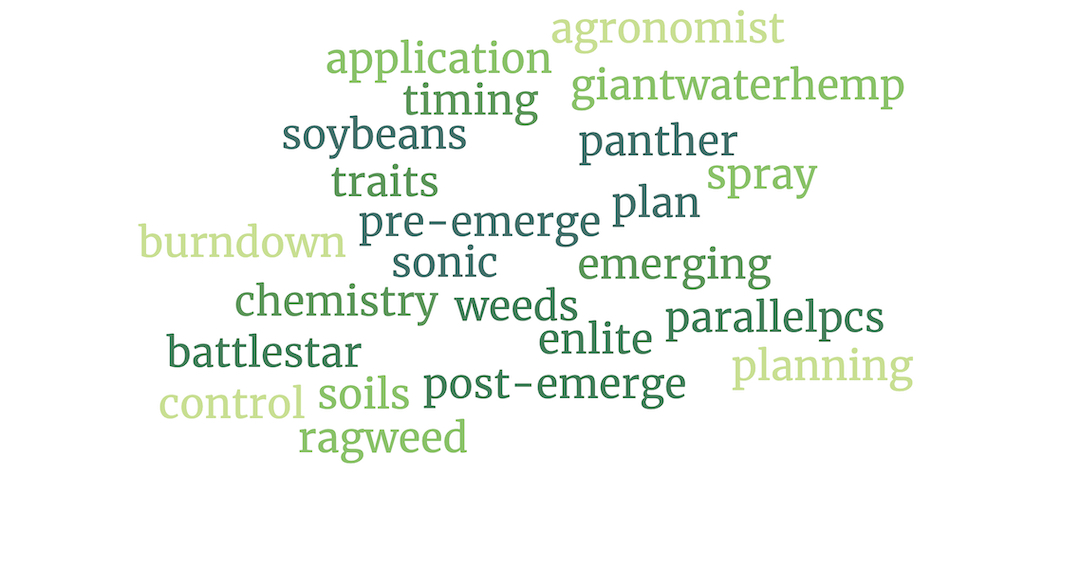What’s Your Soybean Pre-Emerge Plan?
Jan 24, 2023

The dreary days of January are a good time to start thinking about pre-emerge herbicides and making early season weed control plans
“You need to make a plan for herbicide application,” said Craig Loen, Federated agronomy sales rep in Osceola. And that plan involves asking yourself:
But you also have to ensure that the soybeans haven’t emerged yet. Several herbicides can damage emerging seedlings, or stop germination altogether, so “scout the whole field” before assuming it’s safe to apply certain products (and as always, read and follow the label directions).
Pre emerge chemicals generally need rainfall to activate the chemistry, and soil type is always a consideration. Careful review and planning now will ensure that you have the right herbicide for the soil type, seed trait – and weather conditions – when it comes times to spray.
Here are a few pre-emerge options Federated recommends, but talk to your Federated Agronomist to learn what is best for your particular crop and farm management practices:
Sonic® – good on medium to heavy soils; cannot be used on light texture/sandy soils. Mix with Tricor™ 4F for even greater effectiveness.
Panther® SC plus Tricor 4F – good option for sandy soils.
Enlite® – good burndown and residual herbicide for no-till acres; cannot be applied to emerging beans – not even if only cracking the soil.
Note: Sonic, Panther, and Enlite have rules for soil cracking, emergence, or beans sitting on top of the soil, so apply within 3 days of planting.
If any of the above restrictions apply to your fields, then plan B – and “you always need a plan B,” said Loen, is:
Battlestar® with Parallel® PCS – good when weather delays application and doesn’t have the tight emergence restrictions. Again, add Tricor 4F to enhance performance.
Meeting with your Federated Agronomist in January (and February) is a great way to get the new season’s plans set in motion. Call today.
“You need to make a plan for herbicide application,” said Craig Loen, Federated agronomy sales rep in Osceola. And that plan involves asking yourself:
- What were the issues in this field the last time I planted soybeans?
- What weeds were a point of frustration and/or not controlled that year?
- Were giant ragweed and/or waterhemp on that list?
- Were both pre- and post-emerge herbicides applied?
But you also have to ensure that the soybeans haven’t emerged yet. Several herbicides can damage emerging seedlings, or stop germination altogether, so “scout the whole field” before assuming it’s safe to apply certain products (and as always, read and follow the label directions).
Pre emerge chemicals generally need rainfall to activate the chemistry, and soil type is always a consideration. Careful review and planning now will ensure that you have the right herbicide for the soil type, seed trait – and weather conditions – when it comes times to spray.
Here are a few pre-emerge options Federated recommends, but talk to your Federated Agronomist to learn what is best for your particular crop and farm management practices:
Sonic® – good on medium to heavy soils; cannot be used on light texture/sandy soils. Mix with Tricor™ 4F for even greater effectiveness.
Panther® SC plus Tricor 4F – good option for sandy soils.
Enlite® – good burndown and residual herbicide for no-till acres; cannot be applied to emerging beans – not even if only cracking the soil.
Note: Sonic, Panther, and Enlite have rules for soil cracking, emergence, or beans sitting on top of the soil, so apply within 3 days of planting.
If any of the above restrictions apply to your fields, then plan B – and “you always need a plan B,” said Loen, is:
Battlestar® with Parallel® PCS – good when weather delays application and doesn’t have the tight emergence restrictions. Again, add Tricor 4F to enhance performance.
Meeting with your Federated Agronomist in January (and February) is a great way to get the new season’s plans set in motion. Call today.